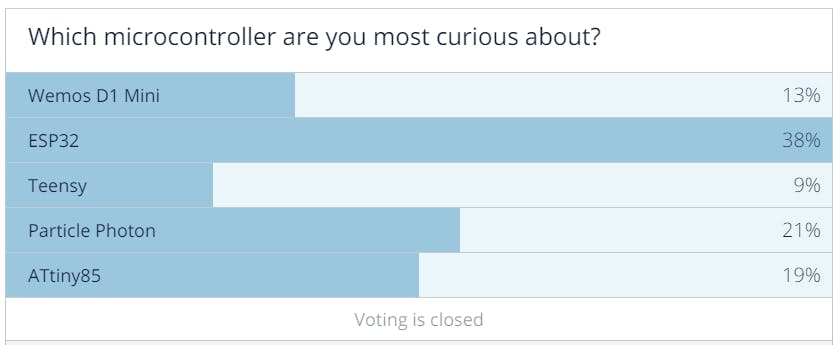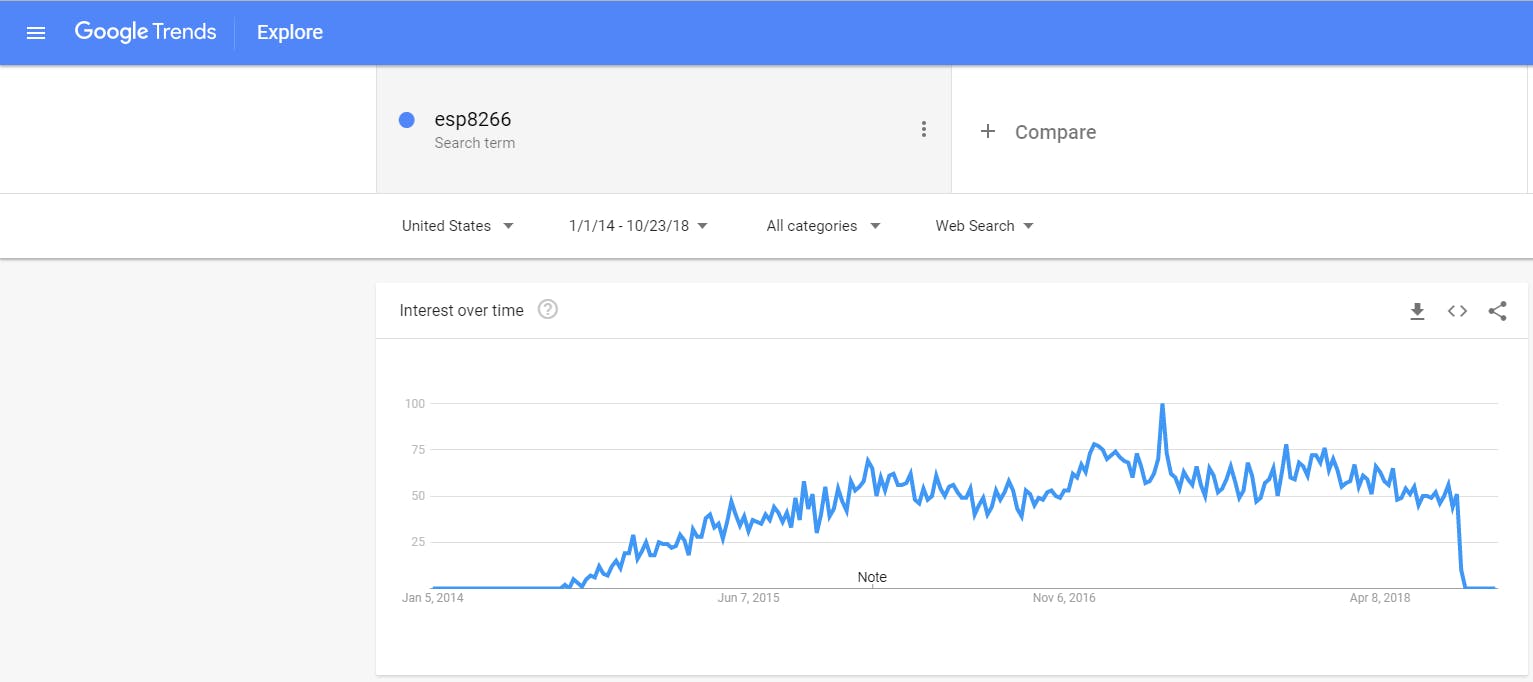
Ut omnis commodi vol
Atque ea illo nostru.

Atque ea illo nostru.

At the core of many electronics projects and products, you'll likely to find some sort of microcontroller. A Microcontroller is in fact a small computer on a single Integrated Circuit (IC).
Here at circuito.io, we’ve paid particular attention to one type of microcontroller: the Arduino board, which is built around Atmel’s ATMega328 chip.
The Arduino development platform is popular and accessible, making it a great point of entry into the world of microcontrollers, embedded systems and electronics in general.
With additional components, sockets and headers, the Arduino is easy to get along with, and it’s capable of serving a broad range of functions.
But of course, it also has its limitations, for example, It comes with only a fixed amount of GPIO pins; it’s relatively under-powered, and it lacks many of the features boasted by newer devices like the Beaglebone Black.
Once you've reached a certain point in your electronics expertise, you might start feeling these limitations. And that's exactly why we're writing this post to get you familiar with other microcontrollers and realize there's a wide range of alternative microcontroller boards available.
The ATMega328-powered Arduino isn’t the only option available to electronics hobbyists and developers. In fact, it's just one part of an enormous and bustling market that provides solution to different users - from makers tinkering in their garage to multinational corporations.

So what do the newer boards have to offer?
- First of all, they are mostly smaller and more powerful
- Wireless functionality and encryption are particularly popular among the more recently developed boards – and you’ll be able to use these functions without needing to expand your board with shields and other peripherals.
We’ve talked a lot about Arduino here on our blog, mainly because most of the MCUs we had up till now on circuito.io were Arduino boards. Recently we've decided to add another 32-bit microcontroller.
We narrowed down the list of options to 5, and asked you, our community, to help us choose which microcontroller we should add next.
The winning board was the ESP32. This board has built-in wireless capabilities, it's affordable and it has great documentation, and we can really understand why you chose it.

Let's take a closer look at the 5 candidates, starting with the winning board:
This prototyping board is the work of the Shanghai-based company Espressif Systems. It incorporates the ESP32, a microprocessor tailored toward wearable electronics and IoT. It boasts integrated Wi-Fi and Bluetooth, along with an array of inbuilt antenna switches, and ultra-low power consumption.
CPU - Tensilica Xtensa 32-bit LX6 @ 240Mhz
Memory - 520KB RAM, 448 KB ROM
Wireless - Built-in WiFi and Bluetooth
Dimensions - 55.3mm x 28.0mm x 12.3mm
The company released the ESP8266 chip in 2014. Costing only a few dollars, this small chip is able to bridge an Arduino with a WiFi network, solving many issues that early IoT pioneers experienced.
It captured the attention of many talented engineers, who got it to co-operate with a range of programming environments, including Arduino. Within a few months, it's popularity started rising.

The ESP8266 does have a few downsides though: it has a small amount of GPIO pins, only a few A/D converters, and it's under-powered.
These issues were addressed by the chip’s successor, the ESP32, which was launched in 2016. It brought with it an improved spec sheet and the ability to easily connect with external microcontrollers.
The central processor is a 32-bit Tensilica LX6 dual-core, clocked at 240Mhz. You’ll get just over 500kb of memory to play with, along with support for external flash drives.
Wireless connectivity comes in the form of BLE Bluetooth and 802.11 b/g/n WiFi, bundled with a robust set of cryptographic hardware tools.
In addition, there’s an ultra-low power processor that’ll perform certain functions while the device is in deep sleep, which makes the ESP32 an excellent match for battery-powered projects.

Blogging has been around since the late 1990s and has become one of the most popular mediums for people to express their thoughts, share information, and generate income. If you’re thinking of starting a blog of your own, it’s important to understand the steps needed to be successful. In this post, we’ll provide a step-by-step guide on how to start a blog. So, let’s dive in and explore the possibilities.
Table Of Contents
A blog is an online platform where you can regularly publish and share content. It acts as a digital journal or online diary, allowing people to express ideas, experiences, tutorials, or opinions on various subjects. They can cover multiple topics, provide a space for writers to connect with others, and create a community around published content. With the ability to incorporate text, images, videos, and interactive elements, blogs offer a dynamic and accessible resource for sharing information and fostering an online community.
One of the most popular platforms for a blog is WordPress. There are two iterations of WordPress: .org and .com. Either one will suit your needs, but it’s important to understand their differences. WordPress.org is a self-hosted solution, which means you install and host the software on a WordPress hosting provider. On the other hand, WordPress.com offers a blogging platform with its own hosting, which can be a solid choice for beginners. For this tutorial, we will focus on the .org version of WordPress and walk you through the steps to launch your online blog.
Subscribe To Our Youtube Channel
To succeed at blogging, it’s important to set goals, determine who you intend to cater to, and pay attention to more technical considerations. These include picking the right host, choosing a worthy platform, and incorporating all the moving parts needed to support your efforts.
The first and most important step in the process is planning. Sit down and list what you’d like to accomplish with your blog. Are you interested in monetizing your blog? If so, research how you want to turn your blog into a money-making machine. Consider whether you want to run ads directly on your blog or use other methods, such as Google Adsense. You can also incorporate a good advertising plugin that will allow you to create and host banner ads on your blog quite easily.
Consider creating an informational blog if monetization isn’t in the cards right now. These types of blogs are a great source of information and tend to perform well in search results; that is, if your SEO copywriting is up to par.
Lastly, decide whether to incorporate social media into your blog. Having a social media presence on your website is a wonderful way to drive more traffic to your website. There are a lot of excellent social media plugins available that will allow you to embed social feeds, schedule posts to Facebook, or incorporate events.
The next thing to evaluate is whether you want a lifestyle blog that encompasses various topics or drill it down to be more of a niche blog. In general, niche blogs are great for people looking for specific information on a topic versus a more generalized lifestyle blog. There are several benefits to creating a niche blog, including appealing to individuals with particular interests, being excellent for building email lists, and, most importantly, being easier to manage.
The next crucial step in the process involves securing a domain name, which plays a pivotal role in shaping your online presence. When choosing a domain for your business, it’s important to ensure that it is both memorable and easy to spell, while accurately reflecting your business’s niche. While various top-level domain (TLD) extensions are available besides .com, opting for this widely utilized TLD is often best due to its trustworthiness. However, alternatives like .net or .org can also be considered, particularly if your preferred domain with the .com extension is unavailable.
In certain cases, it is possible to acquire a domain that has already been taken, although this can be challenging, especially if the desired domain already has an associated website. To explore available domains, we recommend using a reputable domain name registrar such as Namecheap.
Once you’ve planned out your blog and chosen a niche and a domain, you’ll need to find a good hosting provider. Generally speaking, you’ll want to avoid free hosting platforms and opt for a good managed hosting provider like SiteGround, because they offer the most bang for your buck. Not only do they provide competitive pricing, but they’re one of the fastest hosting companies you can get.